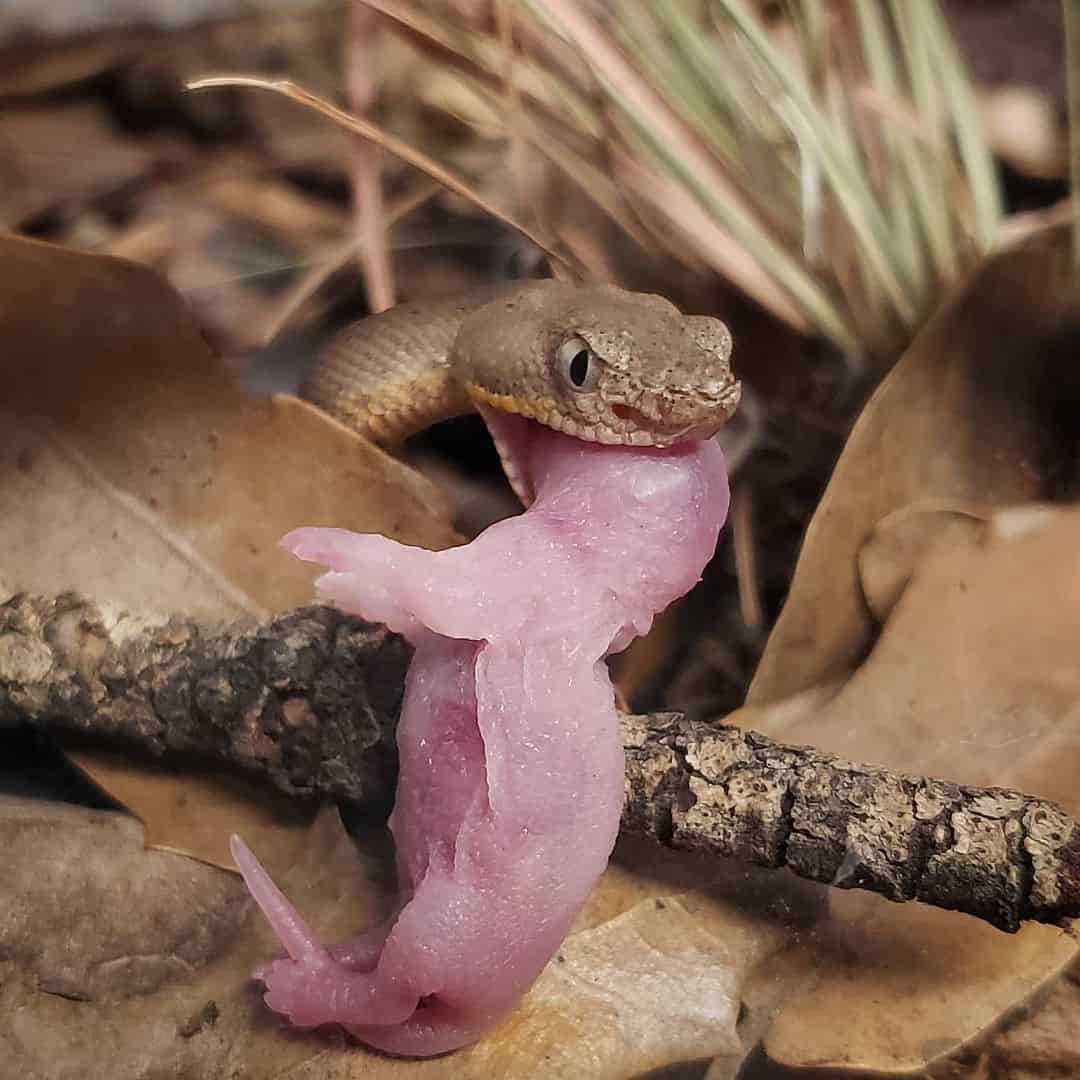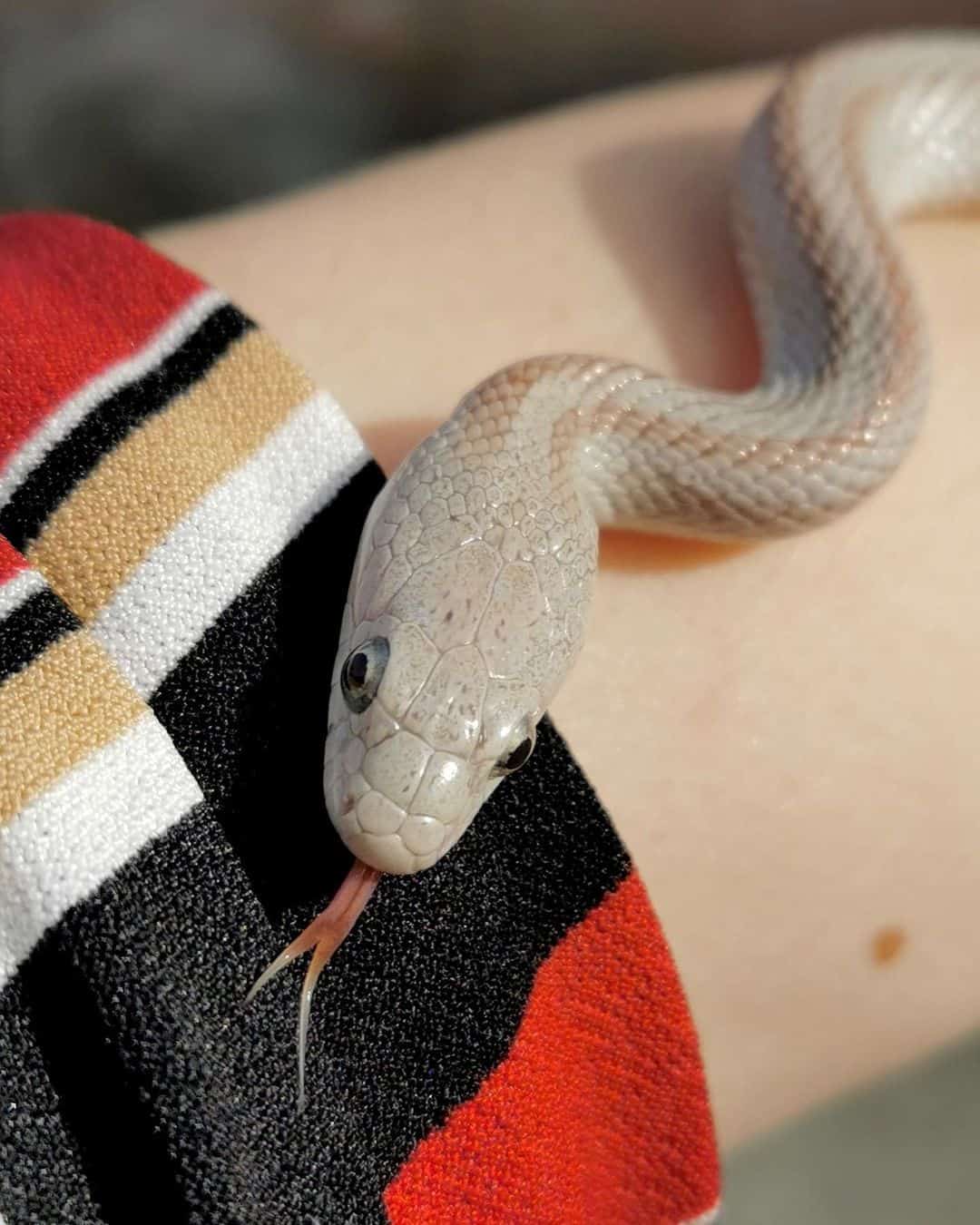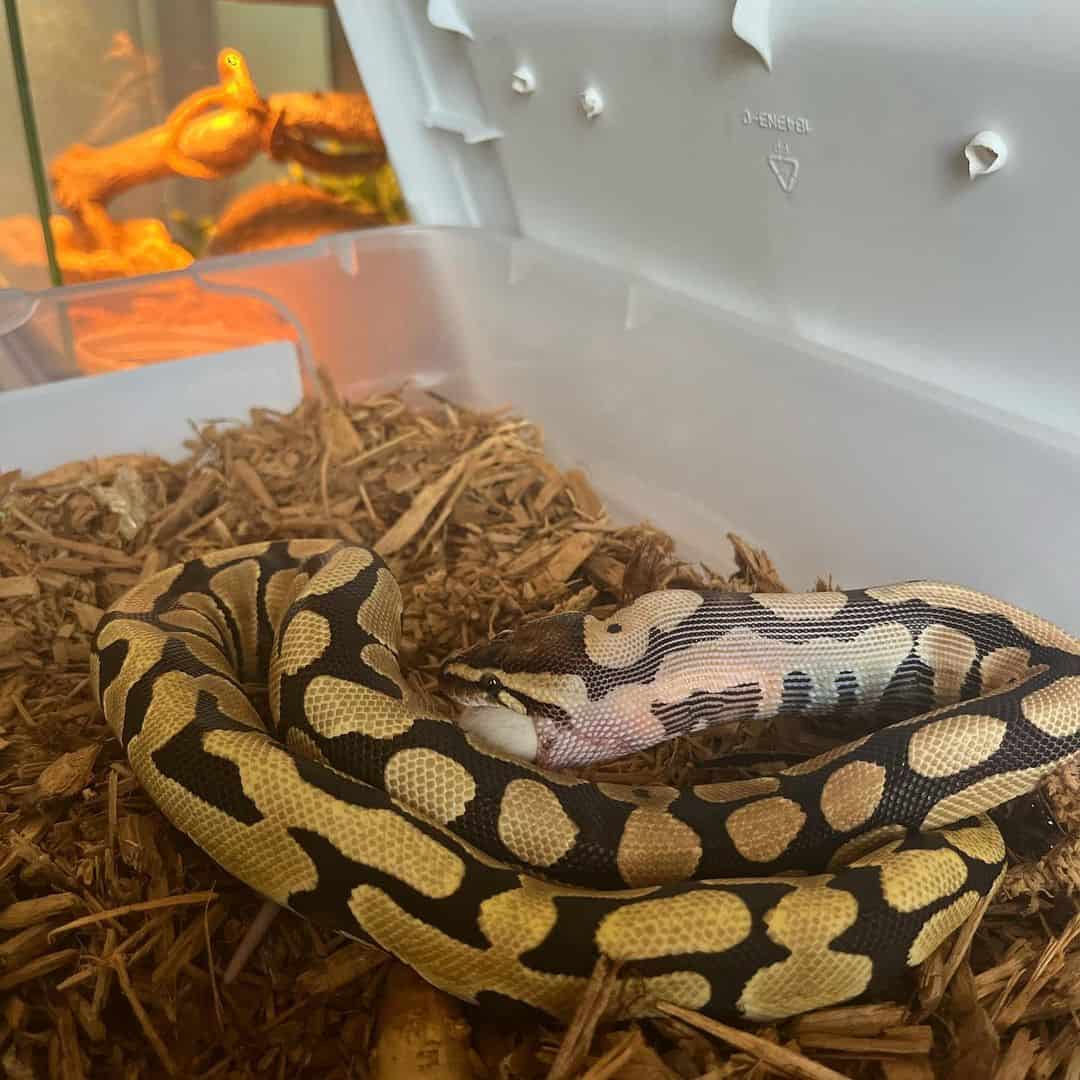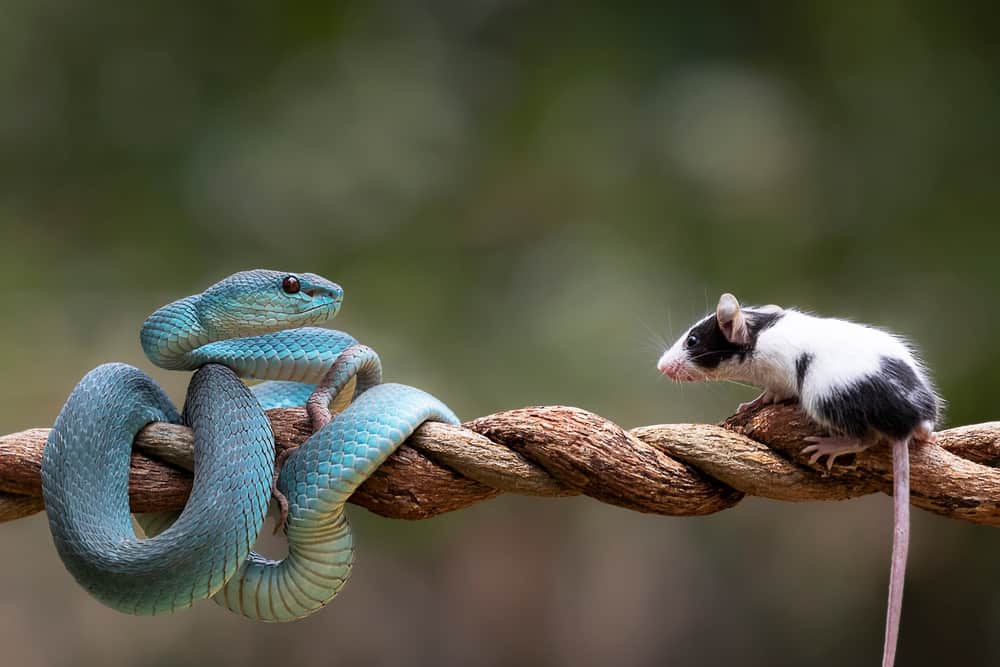Snakes have unique adaptations that allow them to survive in various environments. One which catches most snake enthusiast eye is their ability to go for long periods without food.
While many animals require regular meals to survive, snakes have evolved various strategies to cope with periods of food scarcity.
Understanding how long these reptiles can go without eating is not only fascinating but also important for those who keep snakes as pets or study them in the wild.
In this blog post, we’ll explore the various snake species and how long they can go without eating and discuss the adaptations that help snakes thrive in their environments.
How Long Snakes Can Survive Without Eating
Snakes can survive without food for a few weeks and up to two years. This is mostly seen during brumation in the wild, where there is no prey for them to hunt. When in captivity, this isn’t necessary unless the snake has become obese.
However, despite their ability to survive without food for long periods, snakes still require energy to maintain their basic bodily functions, such as movement and thermoregulation.
As a result, the exact length of time a snake can go without food varies depending on several factors, including species, size, and environmental conditions. For example, a ball python can go as long as 6 months without eating, while a corn snake would not survive beyond 2 weeks.
But how are these reptiles even able to survive that long without food? Let’s find out.
Why Snakes Can Go Without Food for Long
Unlike mammals, snakes have a much lower metabolic rate that can be reduced by 70% during food scarcity. This allows them to conserve energy, survive for long periods, and even grow without food.
When a snake begins to starve, it will rely on its fat reserves as a first source of energy. Depending on the species, additional sources can come from the breakdown of proteins in the snake’s body.
Some snakes can even survive up to two years without food by digesting their hearts or growing larger heads to adapt to the limited prey options.

What Determines How Long a Snake Can go Without Food
1. Species of Snake
Snake metabolism can vary greatly depending on its size and breed. For example, smaller snakes, such as the Corn Snake, tend to have a faster metabolism and will require more frequent feedings than larger snakes, like Sand Boa or California kingsnake. These larger species have slower metabolisms and do not need to be fed as often.
When selecting a pet snake, you should pay close attention to the metabolic needs of the specie as it is an important factor in providing the proper care for these animals. More research and information should be collected on each species before taking them in as pets so that they receive the best dietary requirements and consistent feeding schedules to make them happy and healthy.
2. Age and Size of Snake
Young hatchlings or juveniles must be fed much more frequently than adults, sometimes as often as every day. This is because they are growing at a quicker rate, and thus, their food is burned off faster. It’s similar to human babies, children, and teenagers, who have much higher appetites than full-grown adults due to the demand for more calories during growth spurts.
However, once a snake reaches its mature size, their metabolism slows down, and it can go days without needing to eat again. Although different snakes may need slightly different feeding periods depending on the specific species, age plays an undeniable role in how often one needs to be fed.
3. Environmental factors
Certain seasons affect a snake’s diet and can cause it to have different eating habits depending on the time of year. For example, during wintertime, snakes typically go through a period of brumation which is very similar to hibernation in mammals. As their metabolism slows down, they will stop eating as frequently and may only eat once every few weeks or months while they are brumating.
In addition to brumation, a second factor to consider is shedding. Although it does not necessarily follow any particular annual pattern, snakes go through periods of shedding on a relatively regular basis and will often pause their eating during this time.
These factors differentiate how long each snake species can survive in environments where food is scarce and are the main reason they can go without food for so long. But can these adaptations be related to snakes raised in captivity or as pets?

Comparing Snake Eating Habits In the Wild To Pet Snakes
Snakes in the wild are subject to natural fluctuations in food availability and have evolved to adapt to these circumstances in their environments. So, it’s natural that they’ll be able to go longer without eating than pet snakes.
Pet snakes and those in captivity are usually provided with a regular and consistent food source which can affect the snake’s metabolism, and they may not have the same survival instincts as wild snakes.
Here are some common pet snakes and how long they can go without eating.
| Pet Snake Type | How long They Can Go Without Eating |
| Corn snake | Up to two weeks |
| Garter snake | 2 to 3 months |
| Ball Python | 4 to 6 months |
| Kenyan Sand Boa | Up to 1 year |
| California Kingsnake | Up to 6 months |
| Rosy Boa | 14 days |
| Milk Snake | 6 weeks |
| Smooth Green Snake | 2 to 3 weeks |
Always keep in mind we do not recommend starving your pet snakes. Owning a pet snake can be a rewarding experience, so ensure regular monitoring and care for your pet’s health and safety.
If you notice your pet snake has not been feeding for an unusual number of days, it could be due to other reasons besides their instinct to hold their metabolism. A condition referred to as self-starvation or anorexia.
In the wild, snakes will often go for long periods without eating, but in captivity, anorexia can lead to serious medical conditions or death if left untreated. So, it’s important to understand the potential causes and find solutions.
What Causes Self-starvation in Snakes?
1. Seasonal and reproductive Fasting
During the winter months, snakes may reduce or refuse to eat food altogether as a way to conserve energy during hibernation. This is known as seasonal fasting.
In addition, female snakes may also go through reproductive fasting when preparing to lay eggs. During this time, their bodies focus on the development of eggs, and their appetite declines for weeks or even months.
2. Unconducive Environment
The environment in which your pet snake lives can greatly impact its willingness and ability to eat. Unconducive conditions such as low temperatures, low humidity levels, and poor lighting can all discourage your pet snake from eating and lead to self-starvation.
Low temperatures can slow digestion, and high humidity levels could cause respiratory infections that contribute to a lack of appetite. Additionally, intense or insufficient lighting could lead to stress and disorientation for the snake, ultimately causing it to refuse meals.

3. Health Issues
Your snake could have digestive problems such as blockages or impactions, which can cause discomfort or respiratory infections, which make it difficult for a snake to breathe and eat.
Even something as simple as a broken or infected tooth could make it painful for the snake to eat, potentially leading to self-starvation. A thorough physical examination by a veterinarian can help rule this out.
4. Stress and anxiety
Stress and anxiety are big factors in why some snakes self-starve. Specifically, when snakes are relocated, handled inappropriately, or kept in solitary environments without adequate interaction with other animals, these can all cause a snake to become highly stressed and anxious.
5. Predatory instincts
Snakes have natural predatory instincts, which can cause them to become fixated on hunting and feeding. Your snake might want to experience the same when in captivity and would not take a hand feeding from you.
Conclusion
Knowing how long a snake can go without eating is important for proper snake care. The general rule of thumb is that snakes can go up to six months without food if given adequate warmth and humidity. However, it’s best to stick with these recommendations of feeding your snake every one to two weeks for optimal health and longevity.
- Monitor your snake’s weight and ensure it is within a healthy range for its species and size.
- Consult with a veterinarian or an expert in reptile care if you suspect your snake is not healthy.
- Provide proper care for your snake, including proper feeding, the right temperature and humidity, and a clean enclosure.
- Consider hibernation or brumation period for your snake if it’s necessary.
- Pay attention to the signs of malnutrition and act to find solutions immediately.
- Remember that each snake is unique, so be sure to research the specific needs of your snake species.
If you have any further questions about snakes and their nutrition, please leave them in the comments below, and we will do our best to provide helpful responses.
